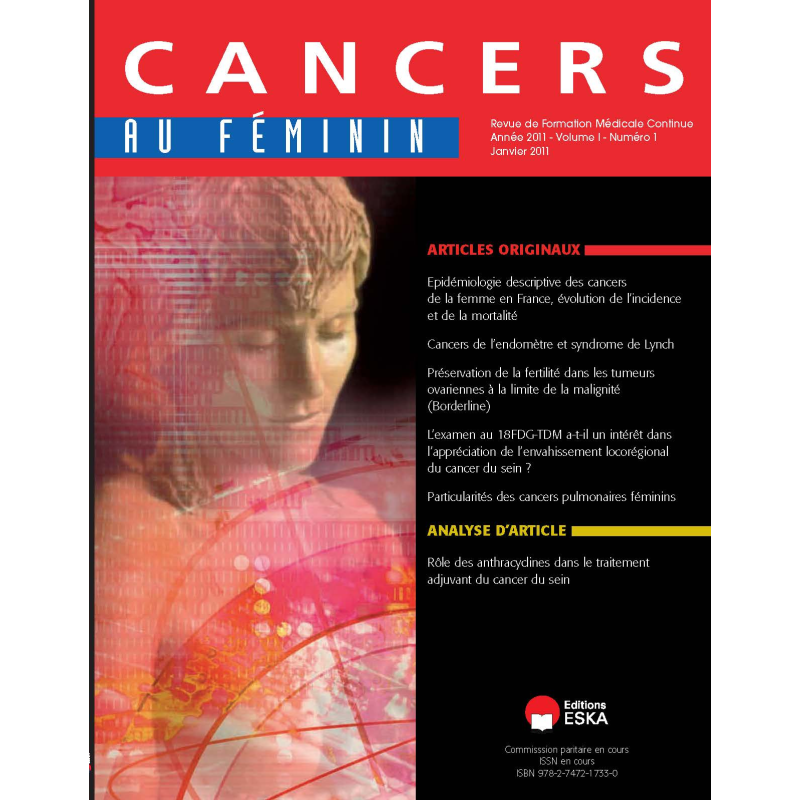



 Security policy
Security policy
(edit with the Customer Reassurance module)
 Delivery policy
Delivery policy
(edit with the Customer Reassurance module)
The continued increase in mortality from lung cancer in women is a major French public health problems which we are currently facing. A review of epidemiological trends show that a few years from lung cancer is the leading cause of cancer death in women French. It is likely, on the basis of prospective cohort studies, there is no increased risk of lung cancer in women compared to men. It is against likely biological differences between the two sexes in terms of this pathology, as evidenced in particular the increased frequency of mutations of p53 and K-ras in women smokers. It is also in the female population that mutations occur preferentially in the EGF-R, a predictor of response to gefitinib and erlotinib. All studies show that the female is a good prognostic factor in terms of survival. Lung cancer is cancer that kills more in France and around the world. However, the situation is contrasted by sex of the patients because, at least in industrialized countries, the slope of incidence and mortality is declining in men while it increases in women. This feature leads to epidemiological study specifically the characteristics of lung cancer in women. Thus, the question arises whether long women are afflicted with a greater susceptibility than men to the carcinogenic compounds in tobacco smoke, which reflect intrinsic biological differences, while he was quickly noticed that the belonging to the female sex was, for this condition, a factor of better prognosis, regardless of the treatment. These are the main points that we will detail
in this article synthèse.Contexte: In France, cancer mortality data are from the Centre of Epidemiology on the medical causes of death from INSERM. The incidence data come from cancer registries that cover about 20% of the French population. The incidence data at national level are therefore estimates.